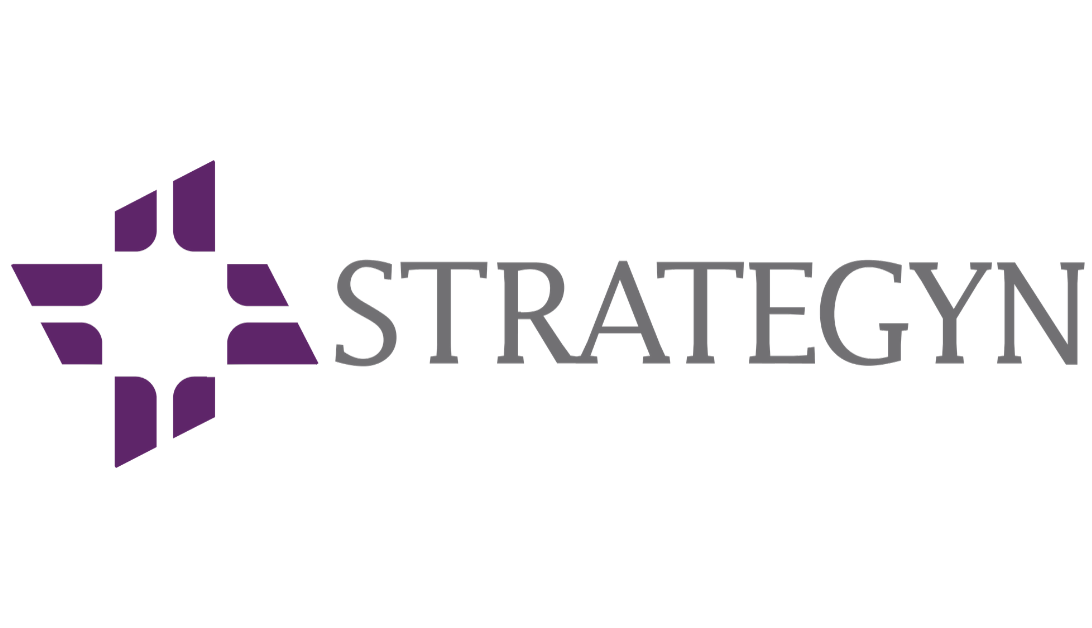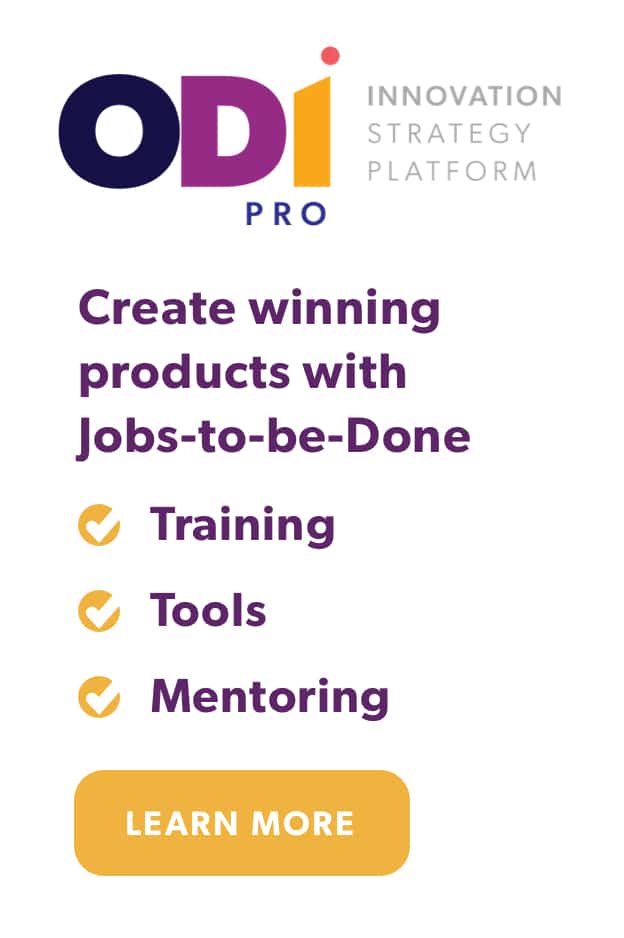Marketers often lament that their market is mature. But is that true? Can a market even be mature?
It can be if you define a market around a product.
Take, for example, the retirement savings account market.
There are many competitors in the space—hundreds of investment account products to help you save for retirement. Does that constitute a mature market? It might constitute a competitive market, but it’s NOT a mature market. In fact, we’ve done studies in the retirement space that show huge opportunities in the market.
How can this be?
The problem is the definition of the market. When you define your market around your product or technology, you pigeonhole yourself into playing in a smaller market that can easily mature, leaving you open to the threat of disruption and creating subpar experiences for your customers.
What’s the solution?
Instead of defining your marketing around your product or technology, define your market around the customer’s Job-to-be-Done. When you define your market through a Job-to-be-Done lens, a market is very rarely mature.
What it means to define your market around a job
Defining your market around a Job-to-be-Done looks like this:

For example:
- [Consumers] who are trying to [cover expenses in retirement]
- [Consumers] who are trying to [manage daily cash flow]
- [Employees] who are trying to [progress in their career]
This definition is agnostic of the product and focuses directly on the customer’s job-to-be-done as the key defining element of a market.
When you define your market through a JTBD lens, you get a much more stable view of a market—a market that does not mature over time, but instead continuously evolves.
This new definition can be transformational for a company in three ways.
The advantages of a jobs-based market definition
Beyond providing a stable focal point for value creation, defining your marketing around the customer’s job-to-be-done provides the following three benefits.
1. Grow in a bigger market
A market defined by a job is larger than one defined by a product—and rarely matures.
You can quickly see how the market of “managing daily cash flow,” for example, provides more opportunity for innovation than being in the “checking or savings account market” or the “credit card market.” Those are solutions that help consumers manage cash flow—but they are not addressing the complete job-to-be-done. In fact, there are many solutions that help people do the job of managing cash flow, which is precisely the point. The market is much bigger when defined by the job than when defined by the product.
When you focus solely on improving your product, you miss the opportunities to solve for complementary pieces of the job—and the opportunity to help your customer get more of the job done. This narrow view of your market shrinks the pie you’re trying to grab a bigger piece of.
A prime example comes from one of our clients that always thought of themselves as building software for tax preparation. When we talked to tax preparers, CPAs, and tax attorneys, they said that tax prep is only a small part of what they do for their clients. Their real job is to devise and implement tax strategies for their clients. Tax preparation is a small piece of the larger job—and the broader market in which the business operates.
Another example comes from an optical medical device company. This company always described their market as the “intraocular lens market”. The intraocular lens is only a part of getting the job-to-be-done. When we redefine the market around the job, this business is actually operating in the “restore eyesight in a cataracted eye” market. Opportunities to innovate around intraocular lenses might be minimal—the product could be mature. But that doesn’t mean that the job of restoring eyesight in a cataracted eye is well served. That market may still have many opportunities for improvement and innovation.
2. Build a disruption-proof advantage
A company that rallies its resources around getting the full job done better will look at all possible solutions as a natural part of their innovation portfolio strategy. Whereas a company that is focused on its solution is more likely to miss opportunities and face disruption.
Consider rental car businesses.
These companies have the product built right into the brand names: Hertz Car Rental, Enterprise Rent-a-Car. But renting a car is not the job that the customer is trying to get done—the job is to get to a destination without your own transportation. Uber and Lyft understood that this market was not mature, innovated to solve for the job in new and better ways. They have taken sizable market share from the rental car providers.
Now, if Hertz or Enterprise had focused on the job of getting to a destination without your own transportation, they would have constantly been looking for new solutions to get this job done. And when Uber and Lyft came out, they may have bought these companies rather than competed with them.
However, Uber and Lyft are in the same danger of market myopia if they think their market is ride-sharing (a solution). The disruptor can suffer the same fate if they are not careful.
Defining your market around the customer’s job-to-be-done helps you see and react to a broader competitive landscape, reducing the prospect of being blind-sided by a disruptive solution.

3. Reduce organizational complexity—and improve the customer experience
Defining your markets around your products often results in the business organizing around products. For example, financial institutions are notoriously organized around product silos, with different teams managing checking accounts, savings accounts, credit cards, debit cards —you name it. These teams rarely interact, let alone collaborate.
And more importantly, these silos prevent better integration of these products, which would help customers get their job done in a simpler, more efficient manner.
This siloed approach can also result in a poor customer experience. Customers are needlessly shuffled around between different product areas. They’re forced to navigate organizational and product complexity—a result of focusing on company goals rather than customer needs. Jobs-to-be-done can be an organizing principle for a company that is in much greater alignment with the customer and their needs—reducing friction in the customer experience.
Defining your market around the customer’s job-to-be-done provides a framework to both reduce redundancy and organize your business more effectively around the customer.
Defining your market around the customer’s job-to-be-done provides a framework to both reduce redundancy and organize your business more effectively around the customer.
Just take a look at disruptors like Acorn, Robinhood, and Wealthfront. Global financial institutions are fearful of these fintechs because they are finding new and better ways to use technology to help customers take care of all of their financial needs in one place. A certain segment of the market does not want to cobble together different products, they want a single platform to get their entire job done.
Wealthfront, for example, allows you to bring your cash accounts and investment accounts (brokerage, retirement, etc.) together at one company, automate your savings, automate your investing, predict your future net worth, borrow against your investments, etc.
Ironically, big banks and integrated financial institutions are in a good position to compete with these fintech companies. They have all the assets and know-how to serve these customers. But defining their markets and organizing the business around products makes it slow and cumbersome to respond to these agile disruptors.
No wonder these fintech startups have experienced high new customer growth rates.
Define Your Market
If you’d like to test run this approach and begin to uncover some of your own opportunities, we’ve created a tool to guide you through it.
The Jobs-to-be-Done Market Definition Canvas is designed to help you define the market you are in or have chosen to serve, through a Jobs-to-be-Done lens.
The canvas lets you start by defining your market in solution space and guides you to redefine it in problem space as [a group of people] + [the job they are trying to get done].
It’s time to start thinking bigger.




